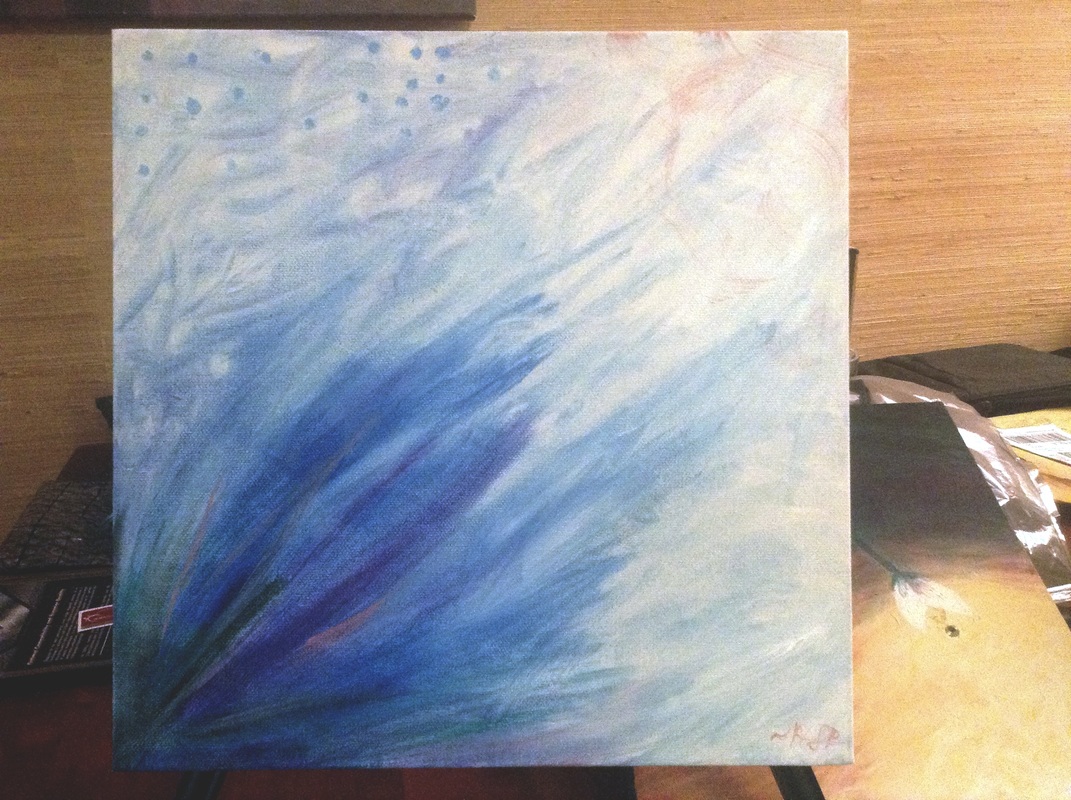 I've been working on these two paintings for quite a bit longer than I'd like. Painting lately has become a push-pull struggle between too dark and too light/bright, where a work will goes through several stages before settling in. However, both of these were way too bright and busy for my tastes. A frenzy with some black paint ended up making them better in some ways but worse in others, so last night I took my good friend the fan brush and made them white and wispy. I'm no longer afraid of the end result, but I do feel as though a bit more black paint, and then some judicial use of acrylics, might save them. I'll post more pictures as they develop, but 98% of the work is in my head, trying to figure out exactly where to apply the brush before it happens.
0 Comments
I sent this painting to a friend for Christmas and they loved it so much that a friend of their friend wanted one just like it. Well, 'just.' I've been feeling inspired by the various paint/draw this again challenges that ask you to take an older piece of work, something seminal that you felt represented your best at the time, and redo it now. It's a great way for artists to judge the distance between their old work and their current ability. Sure, I painted this in November 2014--just over a year ago. Yet, I saw one in my mind's eye that had some improvements done. I've mentioned before that it's hard to capture the acrylic sheen on my oil + metallic acrylic paintings. This is still true. However, this painting represented my best work at the time, and a technique that I first tried in college--painting something that appears to be coming out of or going into the white space of the canvas. Here's the result: I wanted to play more with the idea of light bands, so I used a fan brush over the main architecture in the bottom left-hand corner. I also wanted there to be more artifacts, so I added blue circles by spinning a small brush and pink lines with the fan brush as well as a highlight brush.
When it's dry, I'll add acrylic details similar to Memoria's and clean up the dining room table so it's not a mess of computer parts and paintings. I said the other day that I hate writing from prompts and that I never produce quality work from it or even snippets of work that I could salvage and use later. The closest I came at Goddard was in Reiko Rizzuto's wonderful workshops on troubleshooting one's writing, in which she urged us to channel our characters, freewrite about their wants and needs, and to manipulate scenes to unblock ourselves.
The best writing I do is spontaneous or, more likely, germinates in my subconscious until I decide to put it on the page, and then it goes through a lot of editing. So, I came up with an idea to challenge myself. I took an old prompt piece that I didn't hate but thought was meh, and I'm going to revise it into a publishable flash story. Success=published, and not in some vanity magazine either. Since I'm putting this out there, let's call failure "the inability to become published within eight months." Why eight? First because it might need a couple rounds of revision, even if it is a flash story. Second because lit mags take a long time to respond, so even targeting faster markets, I'm going to have to be aggressive about sending it out. If I can get it into a form I like, I'll pick another prompt piece; I have a bunch, but this one, a flash fiction from 1920s Rome, seems a likely candidate. If you want to do the same, I've love to hear about it. This is 'competing against yourself' at its finest, so we all win if we're writing, revising, and submitting. Happy writing! |
Archives
June 2020
Topics
All
|


 RSS Feed
RSS Feed